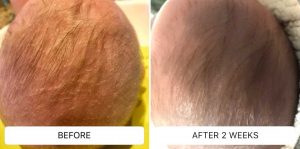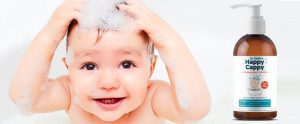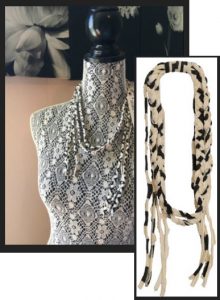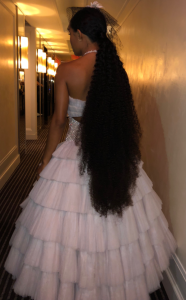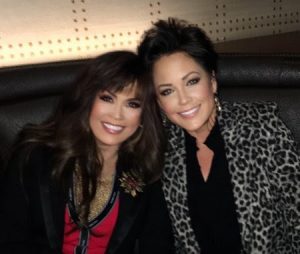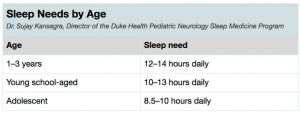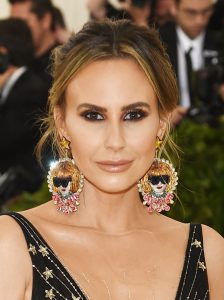
Keltie Knight attends the Heavenly Bodies: Fashion & The Catholic Imagination Costume Institute Gala at The Metropolitan Museum of Art on May 7, 2018 in New York City. (Photo by Jamie McCarthy/Getty Images)
Vogue and W Magazine noted that Keltie Knight’s one-of-a-kind Anna Wintour earrings were scene stealers at Monday’s Met Gala. With rumors swirling that this might be Wintour’s last year with Vogue, and thus her last year hosting the Met Gala, Keltie and jewelry designer Courtney Prince decided to honor her and the earrings are now available for auction on Charity Buzz.
These custom earrings feature a hand embroidered 3 dimensional rendering of Ms. Wintour’s visage with Swarovski crystals and hand painted floral detailing. 100% of the proceeds from the auction of the Anna earrings will be given to Doloris Petunia’s Flower Girls charity of choice, Camfed, an international non-profit dedicated to empowering girls and women through education.
Keltie Knight is an Emmy-winning television personality and Entertainment correspondent. She has been a correspondent and weekend co-host of CBS’s The Insider, and co-anchored CBS’s broadcasting of national events such as the Thanksgiving Day Parade and the Grammy Awards Red Carpet. Knight was able to combine her entertainment and entrepreneurial expertise into a podcast she co-created and co-hosts, The LadyGang. With millions of millennial women downloading the show every week and after debuting at #8 on the iTunes podcast charts, the show remains in the top 100 podcasts in the world. A television series surrounding Knight and her co-hosts Becca Tobin and Jac Vanek has been picked up at E!. Knight is frequently seen contributing on The Talk, CNN, HLN, and and as a moderator for Vanity Fair. Keltie is a staple on every major red carpet, with best dressed mentions in Vogue, Elle, Glamour, US Weekly, People Stylewatch and The New York Times.
Designer Courtney Prince has been in the fashion business for over a decade, creating bespoke accessories and hand-crafted jewelry for those who have a pulse on fashion from Selena Gomez and Heidi Klum to influencers, counting Chiara Ferragni and other top bloggers as early fans. From Vogue to NY Times fashion, Prince’s designs have graced the pages of the top publications. Courtney Prince is also the Creative Director of world renown Doloris Petunia Flower Girls.


